Water Mains — Then and Now
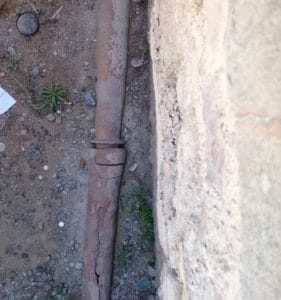 Water mains play a crucial role in modern day civilization and contribute greatly to public health. Water mains have been in use for over 4000 years, and, through the years, huge strides have been made in the engineering and construction of this critical infrastructure.
Water mains play a crucial role in modern day civilization and contribute greatly to public health. Water mains have been in use for over 4000 years, and, through the years, huge strides have been made in the engineering and construction of this critical infrastructure.
Early Mains
The first known underground water mains were constructed by the ancient Minoan civilization between 2200 and 1400 BCE. Constructed of terra cotta, these ancient mains supplied water to the Palace of Knossos. In fact, the ancient Minoans were incredibly advanced for their time, as they also had flushing toilets, sewer piping and drainage, and even rainwater harvesting capabilities. Amazingly enough, the water mains of Knossos were over 1,000 years ahead of their time, as there is no historical evidence of any other water mains until the time of the Roman Empire, between 312 BCE and 500 AD.
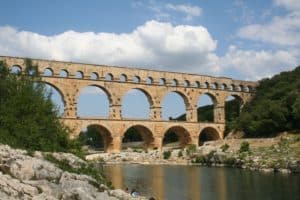
The Roman Empire saw a time of incredible engineering achievement, including the invention of concrete, the construction of bridges and roads, and of course, the innovation of the famous aqueducts. Using gravity to transport water from the outlying hills to the city, these aqueducts, the longest of which was 57 miles, were an incredible engineering accomplishment — and some still stand today. During the early years of the Roman Empire, only the very wealthiest of Romans had water piped directly into their homes via rudimentary water mains, which were constructed of hollowed out logs or drilled stone. Later, water was piped to additional affluent homes via lead pipes. While some argue that the fall of Rome can be attributed to lead poisoning, there is no hard evidence that this theory is true.
Middle Years
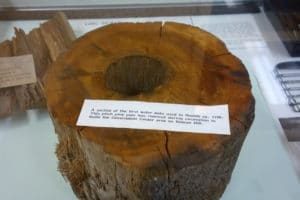
Wooden pipes were used in 16th and 17th century Europe, and in 18th and 19th century Canada and United States. To this day, wooden pipes are occasionally unearthed during construction events in Boston, Massachusetts. Wooden pipes did present some problems in that they tended to attract insects and to rot. Also, they imparted a distinct woody flavor to the water.
In the 1800s, lead pipes came into popularity due to their durability and low cost. However, it was eventually recognized that lead water mains were causing lead poisoning, and by the 1920s, an increasing number of municipalities were prohibiting the use of lead pipes to convey drinking water. Long before Flint, Michigan, one of the worst lead poisoning disasters took place in Lowell, Massachusetts in the 1890s, where some of the drinking water tested contained 1,300 times the current EPA drinking water standard. Werner Troesken, an economist at the University of Pittsburgh, authored an entire book about widespread lead poisoning in turn of the century America from lead water mains.
Modern Times
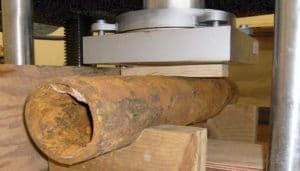
Because lead pipes were recognized to have negative health effects, cast iron water mains because the popular choice in the early 1900s. In use sporadically since 1455 when Germany laid the first recorded cast iron water main in history, cast iron offered a strong, durable, and safe means by which to convey water. Many municipalities on the east coast of America still have cast iron pipes in place that were laid over a century ago. Since their useful life expectancy is 75-125 years, many of these cast iron mains are nearing the end of their useful life or are overdue for replacement. Unfortunately, universal replacement of these failing mains is impossible due to the sheer volume of outdated mains combined with the shrinking budgets and increased regulations that municipalities are currently facing. Therefore, many municipalities are turning to more methodical means of determining which mains should be replaced, such as Advanced Condition Assessment for Pipeline Rehabilitation, which determines the amount of useful life left in a main, and Capital Efficiency Plans™, which identify areas of water systems most in need of rehabilitation, repair, or replacement. Systematically determining utilities’ most critical needs enables efficient use of their limited infrastructure dollars.
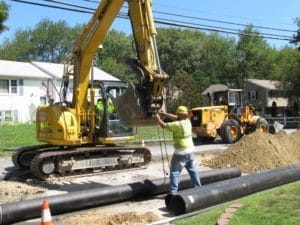
One of the most important modern innovations in water supply is the development of ductile iron in 1948. First used commercially in 1955, ductile iron main is still used today and boasts the longevity of cast iron pipe with the additional benefits of increased flexibility and strength. In addition to ductile iron, modern day water mains are also constructed from polyvinyl chloride (PVC) plastic pipe.
Looking Ahead
Many advances have been made in the conveyance of water since the early days of the Minoans, with several major innovations occurring during the last century. Building on historical knowledge as well as an ever increasing understanding of water chemistry, toxicology, and engineering, water distribution methodology is likely to continue to evolve in ways that will ensure our water is safe, clean, and abundant for future generations.
